Earthing day.
Let’s celebrate Earthing Day together in your garden! I’m thrilled to share nine impactful ways we can honor and connect with the environment. As we strive to foster a deeper relationship with nature and promote sustainable practices, Earthing Day reminds us of the importance of caring for our planet.
From planting native species to engaging in Earth-focused meditation, each activity offers a unique opportunity to positively contribute to the ecosystem while soaking in the beauty of your garden. Join me on this exciting journey of environmental stewardship, and let’s discover how we can make a difference right in our own backyard!
This is a pinnable post. Tap or hover over any image in this post to pin to your Pinterest Boards.
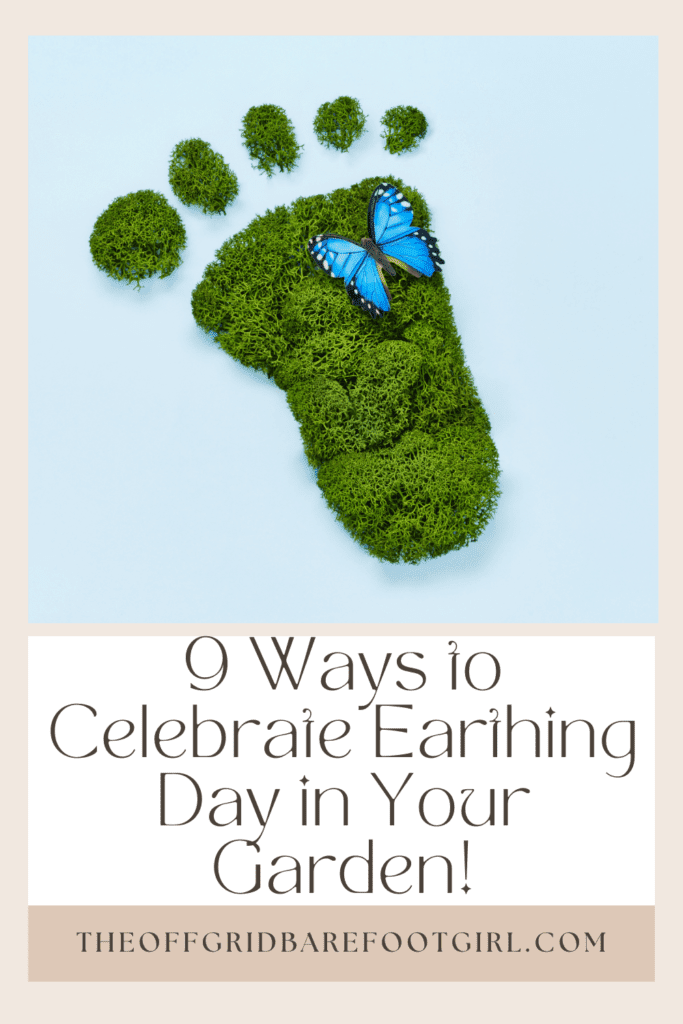
Introduction to Earthing Day
Welcome to Earthing Day, where we celebrate our profound connection to the Earth and rally for environmental stewardship! Today isn’t just any ordinary day; it’s a chance for us to unite in honoring the beauty, diversity, and resilience of our planet. But Earthing Day goes beyond mere celebration; it’s a catalyst for sparking positive change and nurturing a deeper reverence for the natural world.
Through education, advocacy, and hands-on activities, we empower individuals and communities to take meaningful action in safeguarding and cherishing our precious environment. So let’s dive in, roll up our sleeves, and embrace a journey of exploration, conservation, and sustainability. Together, we hold the power to shape a brighter future for generations to come. With love and respect for the Earth, let’s embark on this journey as one united community!
Understanding the Importance of Earth Day
Earth Day is a powerful reminder of our interconnectedness with the planet and the urgent need to safeguard its health and vitality. It serves as a rallying cry for environmental awareness and action, inspiring individuals and communities to unite in the fight against climate change, pollution, and habitat destruction. By understanding the importance of Earth Day, we recognize that every action we take has a ripple effect on the health of the planet and all living beings. It’s a time to reflect on the beauty and fragility of our natural world and to renew our commitment to sustainable living practices that promote harmony and balance.
Through education, advocacy, and collective efforts, we can create positive change and ensure a brighter future for generations to come. So let’s stand together, shoulder to shoulder, and embrace our responsibility as stewards of the Earth. Together, we have the power to make a difference and protect the precious gift of life that sustains us all.
History and Significance of Earthing Day
Earthing Day stands as a testament to the power of grassroots activism and environmental advocacy. Born from the collective efforts of passionate individuals, it emerged as a global movement to raise awareness about pressing environmental issues and advocate for positive change. Its origins trace back to the first Earth Day in 1970 when millions of people took to the streets to protest pollution, environmental degradation, and the loss of biodiversity.
Since then, Earth Day has evolved into an annual celebration of our planet’s beauty and a call to action for sustainability and conservation. Its significance lies in its ability to unite people from all walks of life in a shared mission to protect and preserve the Earth for future generations. It serves as a reminder that each of us has a role to play in safeguarding the health and integrity of our planet and that together, we can make a meaningful difference in creating a more sustainable and resilient world!
9 Ways to Celebrate Earthing Day in Your Garden!
In our gardens, we find a sanctuary, a space where we can connect with nature and cultivate sustainability. On Earth Day, we start on a journey to honor our planet by nurturing our green spaces with love and care. Let’s explore nine inspiring ways to celebrate Earthing Day in our gardens, each action a testament to our commitment to environmental stewardship and appreciation for the beauty of our Earth.
From planting trees to creating wildlife habitats, each endeavor contributes to a greener, healthier planet. So, grab your gardening tools and join me as we embark on a joyful adventure of Earth-centered celebration right in our own backyards. Together, let’s sow the seeds of change and cultivate a brighter future for all living beings!
1. Hosting a Garden Cleanup Event

Gather your community for an exhilarating Garden Cleaning Event this Earthing Day! It’s time to roll up our sleeves and show our planet some love by tidying up our outdoor spaces. Through this event, we not only beautify our gardens, but also foster a sense of unity and shared responsibility for our environment. Armed with gloves and determination, we’ll clear away litter, pull up weeds, and restore the natural beauty of our green spaces.
As we work together, we’ll witness the transformative power of collective action, turning neglected patches into vibrant havens for life. So, rally your friends, family, and neighbors, and let’s make a meaningful impact on our planet, one garden at a time. Together, we can sow the seeds of positive change and cultivate a healthier, more vibrant Earth for generations to come.
Planning and Organizing a Garden Cleanup for Earthing Day
It’s time to mobilize your community and turn your green spaces into shining examples of environmental stewardship. Start by rallying volunteers and setting a date for the event, ensuring everyone has the opportunity to participate. Create a checklist of tasks, from clearing litter to pruning overgrown vegetation, to ensure that every corner of your garden and neighborhood receives the care it deserves. Don’t forget to gather supplies such as gloves, trash bags, and gardening tools to make the cleanup process smooth and efficient.
Inspiring Others to Take Action!
As you work together, educate participants about the importance of preserving our natural habitats and reducing our impact on the planet. By organizing this event, you’re not just cleaning up your garden—you’re inspiring others to take action and make a positive difference in their communities. So, roll up your sleeves, gather your team, and let’s get ready to transform our green spaces into thriving sanctuaries for nature!
Engaging the Community In Cleanup Efforts for Earthing Day
Let’s ignite a wave of environmental action by engaging our community in cleanup efforts this Earthing Day! Together, we have the power to make a tangible difference in the health and vitality of our neighborhoods and beyond. Reach out to local schools, businesses, and community organizations to spark enthusiasm and participation in cleanup activities. Host informational sessions and workshops to educate community members about the importance of environmental stewardship and the impact of litter on our ecosystems. Encourage everyone to join forces and take ownership of their surroundings, inspiring a sense of pride and responsibility for the spaces we share.
By rallying together, we can cultivate a culture of care and respect for our environment, leaving a lasting legacy of cleanliness and sustainability for generations to come. So, let’s unite our voices and hands in a chorus of action, creating a brighter, cleaner future for all.
2. Incorporating Eco-Friendly Garden Decor
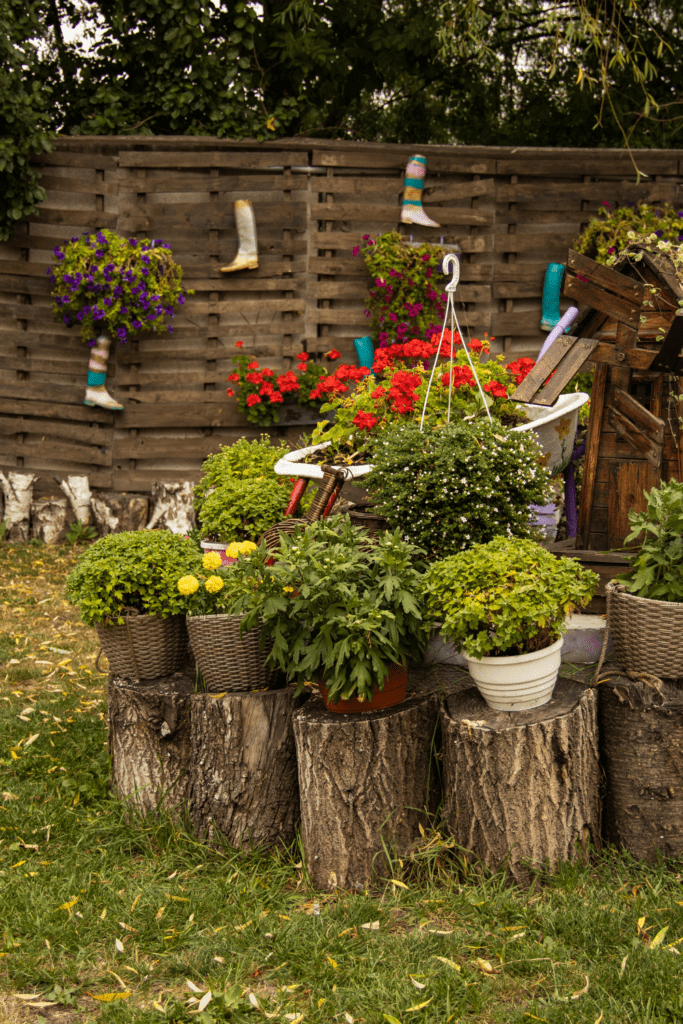
Welcome to the wonderful world of eco-friendly garden decor, where sustainability meets style and beauty harmonizes with environmental consciousness! This Earthing Day, let’s embark on a journey to transform our outdoor spaces into vibrant sanctuaries of green living. By incorporating eco-friendly garden decor, we not only enhance the aesthetic appeal of our gardens, but also contribute to the health of our planet. From repurposed materials to sustainable design elements, there are countless ways to infuse your garden with eco-conscious flair.
So, let your creativity blossom as we explore inspiring ideas and innovative solutions for decorating our gardens in harmony with nature. Together, let’s celebrate Earth Day by embracing sustainable practices and cultivating a greener, more sustainable future—one garden decoration at a time!
Choosing Sustainable Garden Decorations
Let’s set out on a journey of sustainability this Earthing Day by choosing eco-conscious garden decorations that honor our planet’s precious resources. Embrace the beauty of nature-inspired decor crafted from sustainable materials such as reclaimed wood, recycled metal, and natural fibers. Opt for solar-powered lights and water features to add an enchanting ambiance to your garden while minimizing energy consumption. Explore DIY projects that repurpose everyday items into whimsical garden art, unleashing your creativity while reducing waste.
By selecting sustainable garden decorations, we not only enhance the charm of our outdoor spaces, but also demonstrate our commitment to environmental stewardship. Together, let’s adorn our gardens with mindful choices that celebrate the Earth’s beauty and support a more sustainable future for all.
DIY Eco-Friendly Garden Decor Projects
Get ready to unleash your creativity and make a positive impact on the planet this Earthing Day with DIY eco-friendly garden decor projects! Transform everyday items into beautiful, sustainable accents for your outdoor oasis.
Adding Whimsical, Adoring Charm to Your Outdoor Spaces!
- Try repurposing old pallets into vertical planters or herb gardens, breathing new life into discarded materials while adding charm to your garden.
- Get crafty with recycled glass jars and bottles by turning them into enchanting lanterns or whimsical terrariums, adding a touch of magic to your outdoor spaces.
- Experiment with natural materials like driftwood, stones, and shells to create unique garden sculptures or rock gardens that blend seamlessly with the landscape.
With a dash of imagination and a sprinkle of eco-consciousness, you can craft eco-friendly garden decor that reflects your love for the Earth and inspires others to join the sustainability movement. So, gather your supplies, and let’s commence on a DIY adventure that celebrates creativity, ingenuity, and environmental stewardship.
3. Educating Others About Earthing Day

Let’s ignite a spark of environmental awareness and action in our community this Earthing Day by sharing the importance of this special occasion. Earth Day is not just a day; it’s a global movement that celebrates our planet and inspires positive change. By educating others about Earthing Day, we empower them to make informed choices and take meaningful action to protect and preserve the Earth’s precious resources. Whether through workshops, presentations, or community events, let’s spread the message of environmental stewardship and encourage everyone to join in the celebration.
Together, we can create a ripple effect of sustainability that resonates far beyond our community. We can leave a lasting impact on the health and vitality of our planet for generations to come. So, let’s join in on a journey of education and inspiration! Let’s get united in our commitment to building a brighter, more sustainable future for all.
Sharing Information and Resources for Earthing Day
Let’s come together as stewards of the Earth this Earthing Day. Let’s share valuable information and resources to inspire action and foster environmental consciousness.
- Spread the word about the significance of this important day through social media, community forums, and educational workshops.
- Share informative articles, engaging videos, and inspiring stories that highlight the importance of environmental conservation and the impact of our collective efforts.
- Provide resources such as gardening guides, sustainability tips, and eco-friendly product recommendations to empower others to make positive changes in their daily lives.
By sharing information and resources about Earthing Day, we can ignite a passion for environmental stewardship. We can inspire individuals and communities to join the movement towards a more sustainable future. Together, let’s harness the power of knowledge and collaboration to protect and preserve the planet for generations to come.
Organizing Educational Workshops or Events for Earthing Day
Get ready to ignite a passion for sustainability in your community this Earthing Day by organizing educational workshops and events! These gatherings serve as powerful platforms to share knowledge, inspire action, and foster a deeper connection to the Earth.
Educating, Inspiring, and Taking Action Together!
- Host workshops on topics such as organic gardening, renewable energy, and waste reduction to empower participants with practical skills and eco-conscious habits.
- Invite guest speakers, environmental experts, and local activists to share their insights and experiences, sparking meaningful discussions and igniting a spirit of collaboration.
- Engage participants in hands-on activities, such as tree planting, composting demonstrations, or nature walks, to deepen their appreciation for the natural world and instill a sense of environmental stewardship.
By organizing educational workshops and events, we can sow the seeds of change. We can cultivate a community of Earth champions dedicated to building a more sustainable future. So, let’s get ready to educate, inspire, and take action together!
4. Engaging In Earth-Focused Meditation and Reflection

On Earthing Day, let’s embark on a journey of inner exploration and connection with the Earth through Earth-focused meditation and reflection. Find a tranquil outdoor space where you can sit comfortably, surrounded by the beauty of nature. Close your eyes and take deep, grounding breaths, allowing yourself to become fully present in the moment. Tune in to the sights, sounds, and sensations of the natural world around you—the gentle rustle of leaves, the melodious chirping of birds, the warmth of the sun on your skin.
As you immerse yourself in the Earth’s embrace, reflect on the profound interconnectedness of all living beings and the sacredness of the natural world. Let your thoughts flow freely, embracing gratitude for the abundance and beauty that surrounds us. Through earth-focused meditation and reflection, we can deepen our connection to the Earth, nourishing our spirits and renewing our commitment to environmental stewardship.
Connecting with Nature through Meditation
On Earthing Day, let’s begin on a soulful journey of connection with nature through the transformative practice of meditation.
Find a serene spot outdoors where you can sit comfortably and undisturbed.
- Close your eyes and breathe deeply, allowing the natural world to envelop you.
- Listen to the soothing sounds of the breeze, the birdsong, and the rustling leaves, as you immerse yourself in the present moment.
- Feel the Earth beneath you, grounding and supporting you, as you deepen your connection to the world around you.
- With each breath, let go of stress and distractions, and open your heart to the beauty and wisdom of nature.
Through meditation, we can cultivate a profound sense of peace, harmony, and reverence for the Earth, fostering healing and renewal within ourselves and the world around us.
Reflecting on Personal Environmental Impact
This Earthing Day, let’s take a moment to reflect on our personal environmental impact and commit to positive change. Pause and consider the choices we make every day—the products we consume, the resources we use, and the waste we generate. Reflect on the footprint we leave on the planet and how it affects the Earth and future generations.
Reducing our Impact and Promoting Sustainability
Let’s empower ourselves with knowledge and awareness to make conscious decisions that reduce our impact and promote sustainability. Together, through small actions and mindful choices, we can create a ripple effect of positive change and leave a legacy of environmental stewardship for a healthier, more vibrant Earth.
5. Planting Native Species
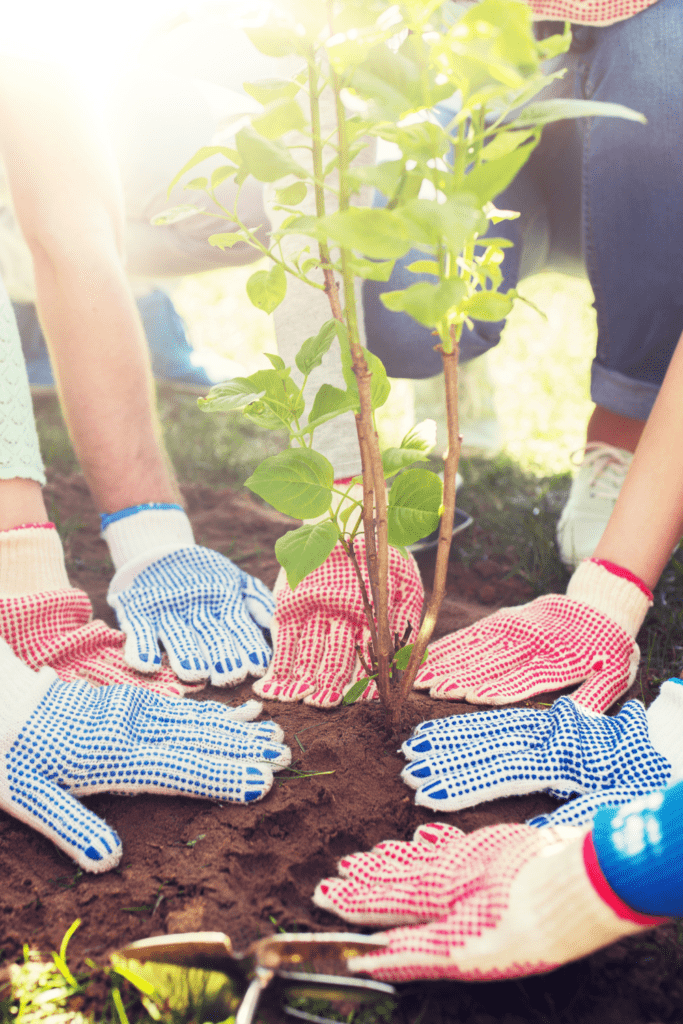
This Earthing Day, let’s embrace the beauty and resilience of our local ecosystems by planting native species in our gardens. Native plants not only thrive in their natural habitats, but also provide essential food and shelter for local wildlife, support pollinators, and promote biodiversity. By choosing native species, we can create vibrant, resilient landscapes that are better adapted to our local climate and soil conditions, reducing the need for water, fertilizer, and pesticides.
Let’s celebrate the diversity of our native flora and contribute to the restoration of our natural habitats, one plant at a time. Together, we can sow the seeds of a greener, more sustainable future for generations to come.
Benefits of Planting Native Species
On Earthing Day, let’s celebrate the myriad benefits of planting native species in our gardens. Native plants are uniquely adapted to local climates and soil conditions, making them more resilient and easier to maintain. By cultivating native species, we can conserve water, reduce the need for chemical fertilizers and pesticides, and promote soil health. Additionally, native plants provide essential habitat and food sources for local wildlife, including pollinators like bees and butterflies.
Contributing to the Preservation of Biodiversity and our Ecosystems
By embracing native landscaping, we not only enhance the beauty of our outdoor spaces, but also contribute to the preservation of biodiversity and the health of our ecosystems. Let’s harness the power of native plants to create thriving, sustainable landscapes that support both people and wildlife alike.
Choosing and Sourcing Native Plants
This Earthing Day, let’s embark on a journey of discovery and conservation by carefully choosing and sourcing native plants for our gardens. Begin by researching native species that are well-suited to your local climate and soil conditions, considering factors such as sunlight, water availability, and soil type. Visit local nurseries, botanical gardens, or native plant sales to find a diverse selection of native plants that support local ecosystems. Choose plants that provide food and habitat for native wildlife, such as pollinators and birds, and consider incorporating a variety of species to enhance biodiversity in your garden.
By selecting and sourcing native plants, we can create vibrant, resilient landscapes that celebrate the beauty and diversity of our natural heritage while supporting the health of our planet. Together, let’s embrace the power of native plants to create thriving, sustainable gardens that benefit both people and the environment.
6. Creating a Pollinator-Friendly Garden
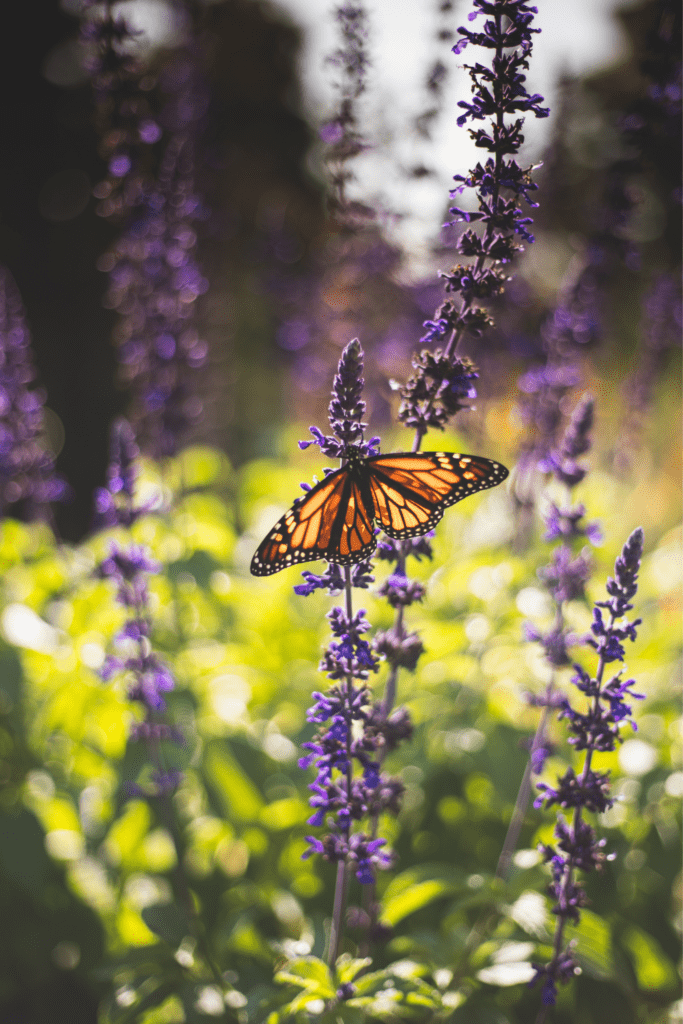
Celebrate Earthing Day by transforming your garden into a vibrant haven for pollinators! Embrace the beauty and importance of these essential creatures by creating a pollinator-friendly garden filled with a variety of nectar-rich flowers, herbs, and shrubs. Choose native plant species that are well-suited to your local climate and provide food and habitat for bees, butterflies, and other pollinators. Incorporate a diverse range of colors, shapes, and bloom times to attract a wide array of pollinating insects throughout the seasons. Avoid using pesticides and herbicides that can harm pollinators and instead opt for natural pest control methods to maintain a healthy garden ecosystem.
By nurturing a pollinator-friendly garden, we not only enhance the beauty of our outdoor spaces, but also play a vital role in supporting the health and sustainability of our planet. So, let’s roll up our sleeves and get ready to create a buzzing, blooming paradise that benefits both people and pollinators alike!
Importance of Supporting Pollinators
On Earthing Day, let’s recognize and celebrate the vital role of pollinators in our ecosystems. Pollinators, including bees, butterflies, birds, and bats, play a crucial role in the reproduction of many plants, including food crops and wildflowers. They facilitate the transfer of pollen between flowers, allowing plants to produce fruits, seeds, and new generations of plants. By supporting pollinators, we not only ensure the health and diversity of our ecosystems, but also contribute to the production of fruits, nuts, and seeds that sustain wildlife and humans alike.
Unfortunately, pollinators face numerous threats, including habitat loss, pesticide use, and climate change, which have led to population declines in many species. By creating pollinator-friendly habitats, reducing pesticide use, and advocating for conservation efforts, we can help protect these invaluable creatures and ensure the health and resilience of our natural world. Let’s come together to support pollinators on Earthing Day and every day, recognizing their importance in sustaining life on Earth.
Designing a Garden to Attract Pollinators
This Earthing Day, let’s start on an exciting journey of designing a garden that welcomes and supports pollinators.
- Start by selecting a variety of native plants that provide nectar, pollen, and habitat for bees, butterflies, and other pollinating insects.
- Choose plants with different bloom times to ensure a continuous food source throughout the growing season.
- Incorporate a diverse range of flower shapes, colors, and fragrances to attract a wide array of pollinators.
- Create habitat features such as rock piles, brush piles, and nesting boxes to provide shelter and breeding sites for pollinators.
- Avoid using chemical pesticides and herbicides, opting instead for organic gardening practices to maintain a healthy and balanced ecosystem.
By designing a pollinator-friendly garden, we not only enhance the beauty of our outdoor spaces, but also play a vital role in supporting the health and diversity of pollinator populations. So, let’s roll up our sleeves and get ready to create a buzzing, blooming paradise that benefits both people and pollinators alike!
Creating a Beautiful, Buzzing, and Blooming Paradise for Pollinators!
To learn more about how to attract pollinators to your garden, I invite you to visit my post in the following link for further details.
How to Attract Pollinators to Improve Your Garden Harvest
7. Implementing Sustainable Gardening Practices
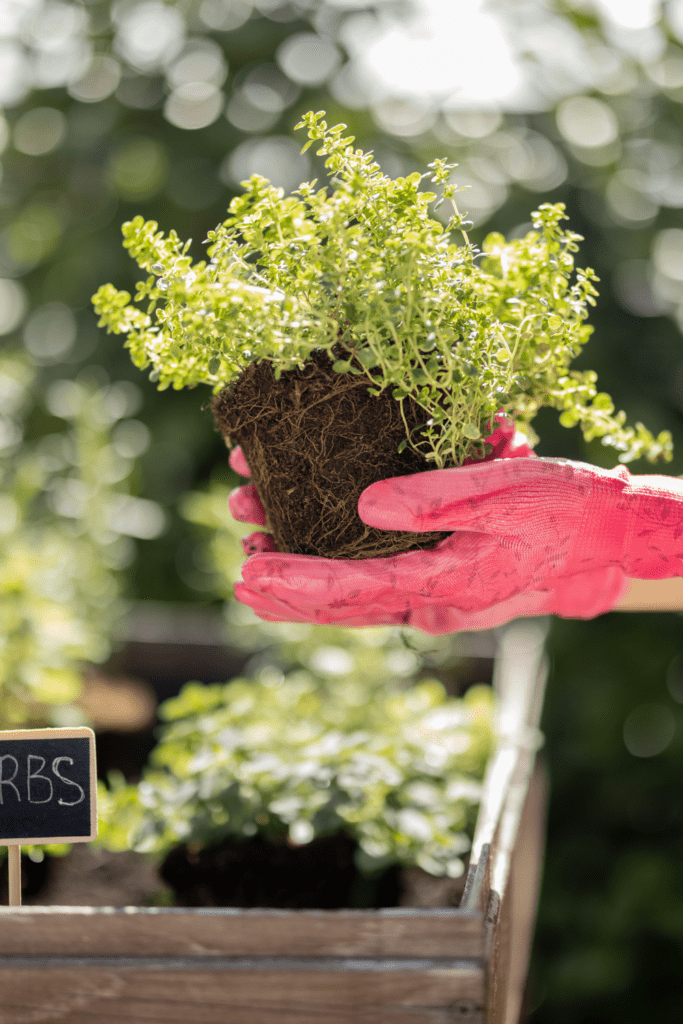
This Earthing Day, let’s commit to implementing sustainable gardening practices that nurture the Earth and promote environmental stewardship.
- Start by conserving water through techniques such as mulching, drip irrigation, and harvesting rainwater.
- Embrace organic gardening methods to enrich the soil with compost, reduce chemical inputs, and support beneficial soil organisms.
- Choose native plants that are well-adapted to your local climate and require less water and maintenance.
- Incorporate wildlife-friendly features such as bird feeders, bee hotels, and butterfly gardens to support biodiversity in your garden.
- Minimize waste by recycling materials, repurposing garden trimmings, and composting organic matter.
By adopting sustainable gardening practices, we can create thriving, resilient landscapes that benefit both people and the planet. So, let’s roll up our sleeves and get ready to cultivate a greener, more sustainable future for generations to come!
Reducing Water Usage in the Garden
On Earthing Day, let’s take action to conserve water in our gardens and make a positive impact on the environment. Implementing simple strategies can significantly reduce water usage while maintaining healthy and thriving plants.
- Consider installing a drip irrigation system or using soaker hoses to deliver water directly to the root zone, minimizing evaporation and runoff.
- Mulch garden beds retain moisture, suppress weeds, and regulate soil temperature, reducing the need for frequent watering.
- Choose drought-tolerant plants native to your region, which require less water and are better adapted to local conditions.
- Practice water-wise gardening techniques such as grouping plants with similar water needs and watering deeply, but infrequently to encourage deep root growth.
By reducing water usage in our gardens, we not only conserve a precious resource, but also create more resilient and sustainable landscapes. Let’s join together this Earthing Day to make a difference and cultivate a greener, more water-efficient future for all.
For a fun water conservation project for your garden, check out my cheap DIY water irrigation system you can implement in your garden at any time!
How to DIY a Milk Jug Drip Irrigation System!
Composting and Organic Fertilization
This Earthing Day, let’s embrace the power of composting and organic fertilization to nourish our gardens and promote soil health. Composting kitchen scraps, yard waste, and other organic materials not only diverts waste from landfills, but also creates nutrient-rich compost that enriches the soil and supports plant growth.
- Incorporate compost into garden beds to improve soil structure, retain moisture, and enhance fertility naturally.
- Additionally, opt for organic fertilizers made from natural sources such as compost, manure, and bone meal, which provide essential nutrients without harmful chemicals.
By practicing composting and organic fertilization, we can cultivate healthy, vibrant gardens while minimizing our impact on the environment. Let’s harness the power of nature to nourish our gardens and create a more sustainable future for generations to come, starting this Earthing Day!
For more tips on how to get started with composting and fertilizers for your garden, visit my helpful tutorial guides in the following links to get started.
- Compost or Fertilizer: Dirty Secrets of Which Is Better?
- Clever Ways to Incorporate Indoor Composting into Your Home
- How to Start Composting for the Garden: A Step-by-Step Guide
- The Ultimate Guide to Composting in Your Suburban Backyard
8. Starting a Seed-Saving Initiative
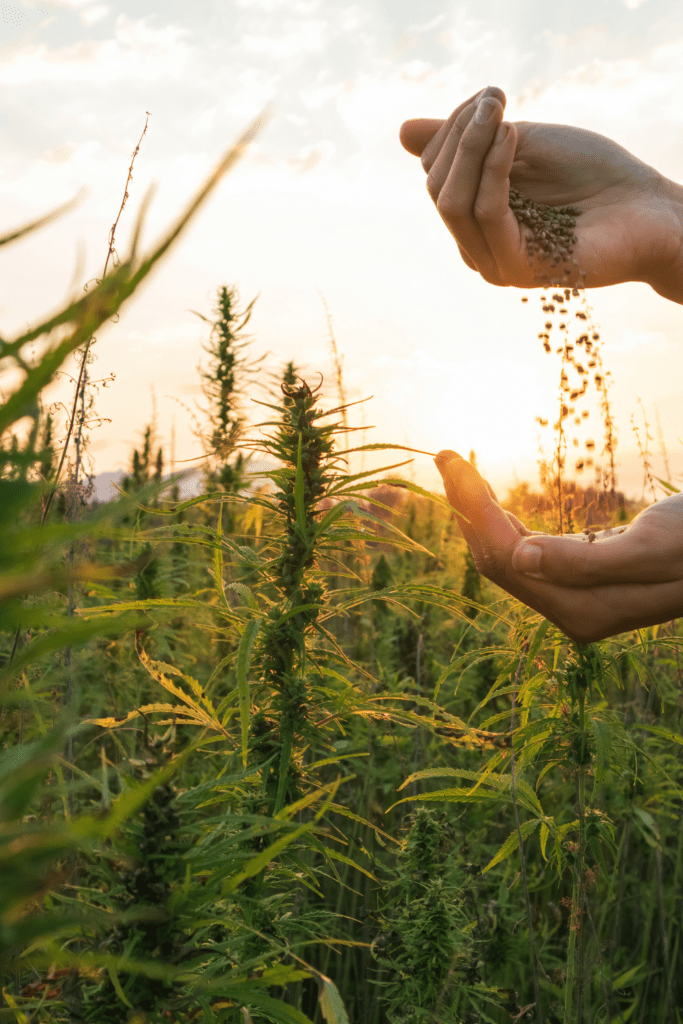
This Earthing Day, let’s embark on a journey of preservation and empowerment by starting a seed-saving initiative. Seed saving is not only a time-honored tradition, but also a crucial step towards preserving biodiversity and ensuring food security for future generations.
- Begin by selecting open-pollinated and heirloom varieties of plants that produce seeds true to type.
- As you harvest fruits and vegetables from your garden, set aside the best specimens for seed saving, ensuring they are fully mature and free from disease.
- Label and store seeds in a cool, dry place for future planting.
- Share your seeds with friends, family, and community members to spread the joy of gardening and promote self-sufficiency.
By starting a seed-saving initiative, we can cultivate resilience, independence, and a deeper connection to the Earth. Let’s sow the seeds of change together, nurturing a sustainable future one seed at a time, this Earthing Day and beyond!
Understanding the Importance of Seed-Saving
Understanding the importance of seed-saving is key to preserving biodiversity, ensuring food security, and fostering resilience in our gardens and communities. By saving seeds from open-pollinated and heirloom varieties, we safeguard the genetic diversity of our food crops, protecting against disease and climate change. Seed-saving also empowers individuals and communities to become more self-sufficient, reducing dependence on commercial seed sources and preserving traditional knowledge and heritage. Additionally, it promotes sustainable agriculture practices by encouraging seed adaptation to local growing conditions and reducing the need for chemical inputs.
Through seed-saving, we honor the sacred cycle of life and cultivate a deeper connection to the Earth and the plants that sustain us. Let’s embrace the power of seed-saving to nourish our bodies, enrich our gardens, and preserve the legacy of biodiversity for generations to come.
Getting Started with Seed-Saving
Set out on a rewarding journey of seed-saving and become a steward of biodiversity in your own garden.
- Begin by selecting open-pollinated or heirloom plant varieties, ensuring that the seeds produced will remain true to type.
- As your plants mature, observe them closely, and select the healthiest and most vigorous specimens for seed-saving.
- Allow these chosen plants to fully mature and produce seeds, ensuring they are dry and fully ripe before harvesting.
- Once harvested, clean and dry the seeds thoroughly before storing them in a cool, dry place away from sunlight.
- Label each seed variety carefully, noting the plant species, variety, and harvest date.
Remember, seed-saving is not just a skill but, a sacred act of preserving life and ensuring future abundance. So, get your hands dirty out in the garden to get those seeds, and let’s start on this empowering journey together, nurturing the cycle of life and fostering resilience in our gardens and communities.
To learn more about saving seeds or builing a reliable seed bank, visit my other posts within the following links.
- What’s Inside the Augason Farms Vegetable Garden Seeds #10 Can? Survival Seeds You Need Now!
- How to Harvest Sunflower Seeds: The Ultimate Guide
- Build Your Survival Garden with an All-In-One Homestead Seed Bank!
- Best Survival Seed Vaults to Stockpile for a Crisis
9. Practicing No-Till Gardening
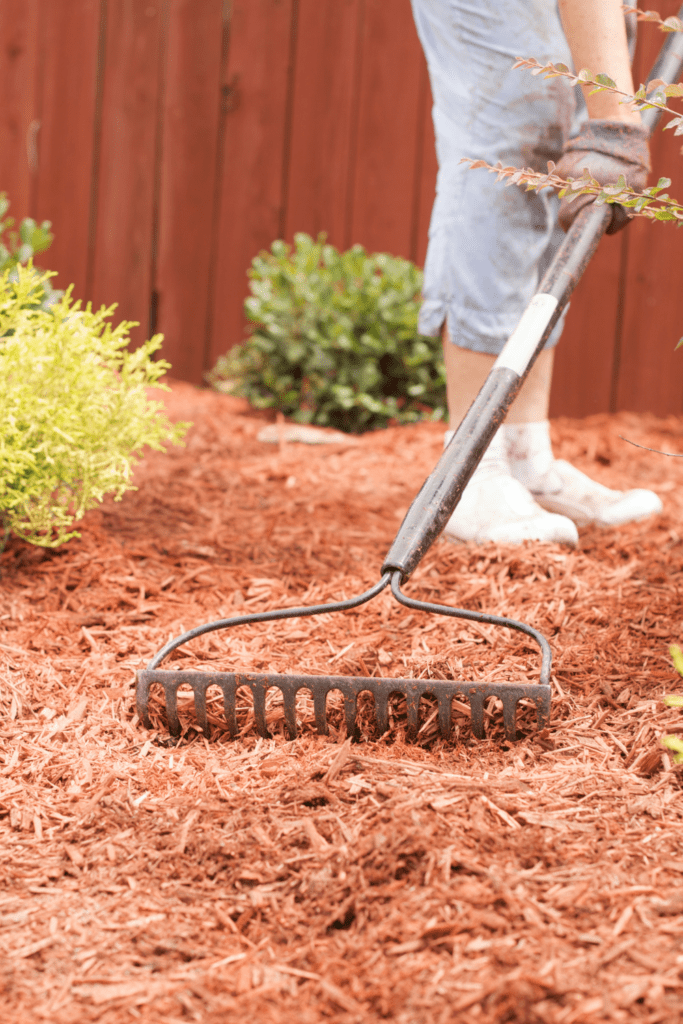
On Earthing Day, let’s embrace the principles of sustainability and conservation by practicing no-till gardening. This innovative approach to gardening minimizes soil disturbance, preserves soil structure, and promotes the health of beneficial microorganisms.
By practicing no-till gardening, we not only protect soil from erosion and degradation, but also contribute to carbon sequestration and climate change mitigation. Let’s cultivate a deeper connection to the Earth and create thriving, resilient gardens that honor and sustain the precious ecosystems that support life on our planet!
Benefits of No-Till Gardening
Celebrate Earthing Day by exploring the remarkable benefits of no-till gardening! This innovative approach to cultivation not only nurtures the health of our soils, but also supports vibrant ecosystems and promotes sustainability. By eschewing traditional tilling methods, we preserve the delicate structure of the soil, retaining vital nutrients and minimizing erosion.
No-till gardening also fosters biodiversity, providing a haven for beneficial organisms like earthworms and microorganisms that enrich the soil. Additionally, this method conserves water, reduces greenhouse gas emissions, and mitigates climate change by sequestering carbon in the soil. Let’s harness the power of no-till gardening to cultivate thriving, resilient landscapes that honor and protect the Earth on this Earthing Day and beyond!
Implementing No-Till Techniques In Your Garden
This Earthing Day, let’s take a bold step towards sustainability by implementing no-till techniques in our gardens. Embrace the power of this innovative approach to cultivation as we preserve the integrity of our soil and foster a healthier ecosystem.
By avoiding soil disturbance, we protect beneficial microorganisms and promote soil structure and fertility. Let’s sow the seeds of change and cultivate a greener, more sustainable future for generations to come, starting with our gardens this Earthing Day!
Here’s a step-by-step guide for both no-till gardening and lasagna gardening:
No-Till Gardening:
- Prepare the Garden Bed: Remove any existing vegetation from the garden bed, such as weeds or grass.
- Apply Organic Mulch: Cover the garden bed with a thick layer of organic mulch, such as straw, leaves, or compost.
- Planting: Make holes or slits in the mulch to plant seeds or transplants. Ensure the holes are large enough to accommodate the roots of the plants.
- Watering: Water the garden bed thoroughly after planting to settle the mulch and provide moisture to the plants.
- Maintenance: Monitor the garden bed regularly for weeds and remove any that emerge by hand. As the organic mulch breaks down, replenish it with additional layers to maintain soil moisture and fertility.
Lasagna Gardening (a form of no-till gardening):
- Layering: Start by laying down a thick layer of cardboard or newspaper over the area where you want to create your garden bed. This will smother existing vegetation.
- Alternate Layers: Add alternating layers of organic materials such as grass clippings, leaves, straw, compost, shredded newspaper, and kitchen scraps. Aim for a balance of “green” materials (high in nitrogen) and “brown” materials (high in carbon).
- Moistening: Water each layer as you add it to ensure the materials are moist and will break down properly.
- Building Height: Continue adding layers until the bed reaches your desired height, typically around 18-24 inches.
- Planting: Once your lasagna garden bed is built, make holes or slits in the top layer and plant seeds or transplants directly into the soil beneath.
- Maintenance: Water the garden bed regularly to keep it moist, and add additional layers of organic materials as needed to maintain soil moisture and fertility. As the layers break down, they will create nutrient-rich soil for your plants to thrive.
Both no-till gardening and lasagna gardening methods offer numerous benefits, including improved soil health, reduced weed growth, and conservation of soil moisture. They are also environmentally friendly and promote sustainability in the garden.
Conclusion
So, whether you’re digging in the dirt, crafting eco-friendly decor, educating others, or finding peace through meditation, there are endless ways to celebrate Earthing Day in your garden. Let’s show our planet some love and make every day Earth Day! Embrace the spirit of Earthing Day in your garden and continue to cultivate a harmonious relationship with the Earth throughout the year. By incorporating these eco-friendly practices and spreading awareness about the significance of this special day, you are actively contributing to the well-being of our planet. Let your garden be a sanctuary of sustainability and a beacon of hope for a greener, healthier future. Together, we can make a difference – one garden at a time!
Happy Earth Day!
Resources: Here are some helpful resources for further information.
- Earth Day: The Official Site – By EarthDay.org
- History of Earth Day – By National Geographic Kids
- Earth Day Is Here! What Can You Do This Year? – By Earth Day Initiative
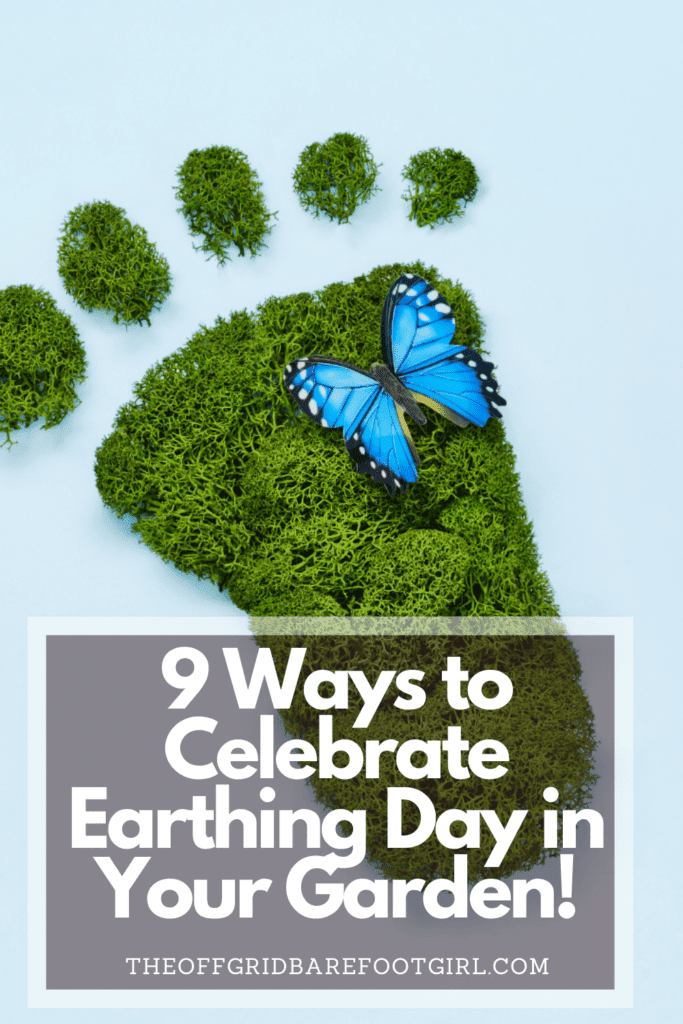
Frequently Asked Questions
1. What is the significance of Earthing Day in gardening?
Earthing Day in gardening is a significant practice because it involves adding mulch or compost to garden beds around plants to create layers of organic material. This helps improve soil quality by providing essential nutrients for plants, retaining moisture, and preventing weed growth. The process of earthing up also protects plant roots from extreme temperatures and helps regulate soil temperature. Additionally, Earthing Day promotes healthy microbial activity in the soil, which benefits plant growth and overall garden health. By regularly earthing up garden beds, gardeners can maintain a fertile and productive growing space. This can help support vibrant, thriving plants throughout the seasons. It’s a simple yet effective way to care for your garden and ensure its long-term success.
2. How can I make my garden more eco-friendly on Earthing Day?
If you want to make your garden more eco-friendly for Earthing Day, there are several easy steps you can take! Start by composting your kitchen scraps and yard waste to create nutrient-rich soil for your garden. Plant native species that require less water and chemical inputs, and attract local pollinators like bees and butterflies. Skip the synthetic fertilizers and pesticides in favor of organic alternatives to protect beneficial insects and wildlife. Install a rain barrel to collect runoff from your roof for watering purposes, reducing your dependence on freshwater resources. Consider adding a bird feeder or bird baths to attract feathered friends. They can help help control pests in your garden naturally. By implementing these simple changes, you can create a more sustainable and environmentally friendly outdoor space to celebrate Earthing Day!
3. Are there any specific plants that are recommended for celebrating Earthing Day?
Sure! When celebrating Earthing Day, it’s a great idea to focus on plants that promote grounding and connection to the earth. Some popular options include lavender for its calming effects and ability to attract pollinators. Add sage for its cleansing properties and pleasant aroma, and rosemary for its purification qualities. Additionally, plants like mint can be a refreshing addition to your garden while also aiding in digestion. Ultimately, the best plants for celebrating Earthing Day will depend on your personal preferences. These include the specific intentions you have for connecting with nature on this special day. Just remember to choose plants that resonate with you and bring positive energy into your space!
4. How can I involve my community in Earthing Day activities in my garden?
If you’re looking to get your community involved in some Earthing Day activities in your garden, there are a few fun and easy ways to do so. One idea is to organize a community clean-up day where everyone can come together to tidy up the garden space. Everyone can plant some new seeds or flowers. You could also host a potluck picnic in the garden where neighbors can bring dishes made with locally sourced ingredients. Another idea is to start a community composting program where everyone can contribute their food scraps and yard waste to create nutrient-rich soil for the garden. By getting your community involved in these activities, you’ll not only be helping the environment, but also building stronger connections within your neighborhood. So grab your gloves and get ready to dig in!
Summary
I hope I have inspired you to celebrating Earthing Day with these tips and products.
If you were encouraged by this post, I invite you to check out my FREE Printables Page for fun free printables, planners, and charts.
ENTER MY FREE Printables Page HERE
Here are some more of my gardening inspiration posts to check out!
Gardening Indoors: Secrets of Growing Your Food Inside!
How to DIY a Milk Jug Drip Irrigation System!
Why Cedar Mulch Is The Perfect Natural Weed Barrier
Onions: How to Grow Onions for Storage
Peas: How to Grow Garden Peas for a Bumper Crop
Carrots: How to Grow Carrots for a Bountiful Harvest
Prep Your Garden for Spring Planting with These Expert Tips!
How to Grow a Prepper Garden to Survive and Thrive
The Best Garden Tools You Need for a Productive Season
Fastest Growing Vegetables for Your Survival Garden
How to Grow Marigolds As Pest Control In Your Vegetable Garden
Must-Have Tools for a Successful Balcony Vegetable Garden
How to Effectively Combat Powdery Mildew in Your Garden
The Best Tips for Organic Gardening
How to Release Ladybugs In Your Garden for Organic Pest Control
The Best Garden Snail Control Strategies
The Best Spring Vegetables to Grow in Your Garden
Seed Starter Mix: How To Make Your Organic Seed Starter Mix At Home
How to Grow a Productive Canning Garden
How to Plant and Grow a Salsa Garden
Easiest Heirloom Vegetable Seeds to Grow Now
How to Use the Hand Twist Claw Tiller: Tackling Tough Soil
More Fun Gardening Posts to Check Out!
Planning Your Garden: How to Plan a Vegetable Garden: Expert Green Thumb Tips!
Winterizing the Garden: How to Winterize Your Vegetable Garden: Step-by-Step Checklist
Mulching the Garden: How to Make Leaf Litter Mulch
Grow a Pumpkin Patch: How to Grow a Pumpkin Patch in Your Backyard
How to Grow a Fall Garden: 9 Best Fall Crops
Clever Ways to Incorporate Indoor Composting into Your Home
How to Start Composting for the Garden: A Step-by-Step Guide
The Ultimate Guide to Composting in Your Suburban Backyard
Why I Built A Survival Garden in My Backyard
16 Best Medicinal Herbs to Grow in Your Garden Now
Blessings,
The Off Grid Barefoot Girl






